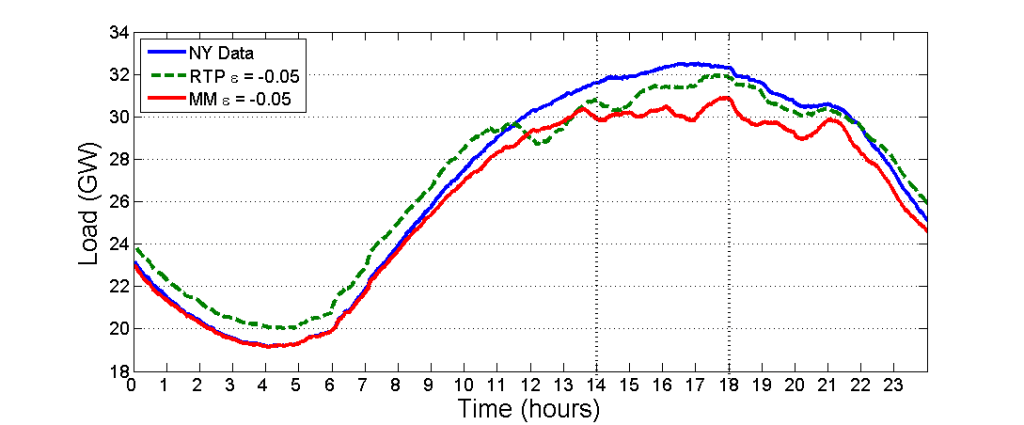In today’s ever-changing business landscape, companies are constantly seeking innovative strategies to maintain a competitive edge. One such strategy that has gained significant traction is dynamic pricing. This pricing approach, driven by market conditions and customer demand, enables businesses to adjust prices in real time.
As part of our pricing guide, we will cover dynamic pricing and how you can implement it in your business with lots of practical examples.
By adopting multiple price points, organizations can optimize their profit potential and effectively respond to market fluctuations. However, the successful implementation of dynamic pricing requires careful analysis and consideration. Factors such as market volatility and customer willingness to pay must be thoroughly evaluated to determine its suitability for a specific business.
Dynamic pricing makes the most sense when you have “peak hours” in your business or when you can “create scarcity” with something like flash sales.

You need to be very careful while going forward with dynamic pricing because recent reports have shown 52% of consumers correlate dynamic pricing with price gouging. But don’t be discouraged, there are some amazing cases where dynamic pricing is being used as a massive marketing campaign, such as the one with TheDrinkExchange.
In this article, we will delve into the various types of dynamic pricing, explore real-world examples, and discuss the advantages and disadvantages of this pricing strategy. By harnessing the power of dynamic pricing, businesses can unlock new avenues for growth and profitability.
Key Takeaways
- Dynamic pricing adjusts prices based on changing demand, helping businesses maximize profit.
- There are different types of dynamic pricing, such as time-based pricing and segmented pricing.
- Dynamic pricing examples include hotels adjusting room prices based on availability, utility providers using dynamic pricing in response to seasonal shifts, and Google Ads varying in cost based on keyword popularity.
- While dynamic pricing has its pros, such as allowing for higher wages during busy times and increasing revenue potential, it also has cons, such as customer dissatisfaction and reduced trust due to inconsistent pricing.
Understanding Dynamic Pricing
Understanding dynamic pricing involves analyzing and adapting to changing market conditions and customer behavior.
Implementing dynamic pricing strategies can be a complex task, requiring careful consideration of various factors.
Firstly, businesses need to assess the market fluctuations and trends to determine if dynamic pricing is suitable for their products or services. Factors such as demand elasticity, price sensitivity, and customer willingness to pay extra must be taken into account.
Additionally, businesses should carefully evaluate their competition and industry landscape to understand the potential impact of dynamic pricing on customer loyalty and market share.
Effective implementation of dynamic pricing strategies also requires the use of advanced pricing technology and data analytics to accurately assess demand patterns and adjust prices accordingly.
Types of Dynamic Pricing
Moving beyond understanding dynamic pricing, let us now delve into the various types of dynamic pricing strategies businesses can employ.
One type is time-based pricing, which links price changes to specific times or events. This strategy is commonly seen in same-day delivery fees and surge pricing for rideshare services.
Another type is segmented pricing, where different prices are established for the same product based on audience segments and perceived value. Examples of segmented pricing include business class vs economy plane tickets and sports tickets.
Additionally, peak pricing is a strategy that increases prices during high-demand periods.
These dynamic pricing strategies allow businesses to optimize pricing based on market conditions and customer behavior, ultimately maximizing revenue and profit potential.
Time-based Pricing
Time-based pricing is a strategy that adjusts prices based on specific times or events. This approach allows businesses to optimize their pricing strategy by taking advantage of fluctuations in demand and customer behavior. By implementing time-based pricing, companies can increase their revenue potential and adapt to changing market conditions.
One way to understand the concept of time-based pricing is through a visual representation. The table below illustrates the different pricing strategies that can be employed based on specific times or events:
| Time/Event | Pricing Strategy |
|---|---|
| Peak hours | Higher prices |
| Off-peak hours | Lower prices |
| Holidays | Special promotions |
| Weekends | Premium prices |
This table demonstrates the pricing flexibility that time-based pricing offers. Businesses can adjust their prices according to the demand and value associated with specific times or events. For example, during peak hours, when demand is high, companies can set higher prices to maximize profit. On the other hand, during off-peak hours or holidays, businesses may offer lower prices or special promotions to attract customers.
Implementing a time-based pricing strategy requires careful monitoring and analysis of customer behavior and market trends. By understanding the optimal pricing strategy for different times or events, businesses can effectively leverage pricing flexibility to their advantage.
Segmented Pricing
Segmented pricing is a strategic approach in dynamic pricing that involves setting different prices for the same product based on audience segments and perceived value.
By dividing customers into different segments based on factors such as demographics, behavior, and purchasing power, businesses can tailor their pricing strategies to meet the specific needs and preferences of each segment.
This allows companies to maximize their revenue by charging higher prices to customers who are willing to pay more, while also attracting price-sensitive customers with lower prices.
Customer segmentation plays a crucial role in segmented pricing as it helps businesses understand the varying levels of perceived value among different customer groups.
Peak Pricing
During high-demand periods, businesses can implement peak pricing strategies to adjust prices and maximize profit. Peak pricing refers to increasing prices during times when demand is at its highest. This strategy takes advantage of customers’ willingness to pay more for a product or service when it is in high demand.
However, it is important for businesses to carefully analyze data to identify these peak periods and determine the optimal price increase that will not alienate customers. The impact of peak pricing on customer loyalty should also be considered, as excessive price hikes during peak demand may lead to customer dissatisfaction and reduced trust.
Dynamic Pricing Examples
How can businesses leverage dynamic pricing to maximize their profit potential? Dynamic pricing has become increasingly popular in the retail industry as businesses seek to optimize their pricing strategies. By adjusting prices based on changing demand, businesses can capture the maximum value from their products or services. This approach not only increases revenue and profit potential but also allows for flexibility in pricing during different market conditions. However, it is important to consider the impact of dynamic pricing on customer loyalty. Inconsistent pricing and excessive price hikes may lead to customer dissatisfaction and reduced trust, potentially impacting long-term customer relationships. To provide a clearer picture of dynamic pricing examples in the retail industry, let’s explore a few scenarios in the table below:
| Industry | Example | Impact on Customer Loyalty |
|---|---|---|
| Airlines | Dynamic pricing of seats based on demand and booking time | Customers may feel frustrated if prices fluctuate widely. However, loyal customers who understand the concept may appreciate the opportunity to get better deals. |
| E-commerce | Flash sales and limited-time discounts | Customers may feel a sense of urgency to purchase but may also wait for discounts, potentially impacting regular-priced sales. |
| Hotels | Room rates fluctuating based on demand and seasonality | Customers may search for better deals and switch loyalty to hotels offering lower prices during their desired travel period. |
These examples demonstrate how dynamic pricing can have both positive and negative impacts on customer loyalty, depending on how it is implemented and communicated.
Hotels
Hotels employ dynamic pricing strategies to adjust room rates based on demand and seasonality. By utilizing this approach, hotels can optimize their revenue and maximize occupancy rates. Dynamic pricing allows hotels to adapt their prices in real-time, considering factors such as current demand, local events, and competitor rates. This strategy ensures that hotels remain competitive in the market while also maximizing their profitability.
Furthermore, hotels can leverage customer loyalty programs to enhance their dynamic pricing strategies. These programs provide valuable insights into customer behavior and preferences, allowing hotels to tailor their pricing strategies to individual guests. By offering personalized discounts and promotions, hotels can incentivize repeat bookings and foster customer loyalty.
Hotel occupancy rates play a crucial role in determining the pricing strategy. During periods of high demand, such as holidays or major events, hotels can increase their rates to capitalize on the increased demand. Conversely, during periods of low occupancy, hotels may lower their prices to attract more guests and fill empty rooms.
Utility Providers
Utility providers also employ dynamic pricing strategies to adjust rates based on demand and seasonality, allowing them to optimize revenue and efficiently manage energy consumption.
Dynamic pricing for utility providers involves setting different rates for electricity or gas based on various factors such as time of day, peak usage periods, and market fluctuations. This approach helps incentivize customers to shift their energy usage to off-peak hours, reducing strain on the grid during high-demand periods.
Additionally, dynamic pricing strategies enable utility providers to encourage energy conservation and promote sustainable practices. For example, during times of high demand, rates can be increased to discourage excessive energy consumption. This pricing model is similar to the dynamic pricing used in the airline industry, where ticket prices fluctuate based on factors such as demand, seasonality, and seat availability.
Google Ads
Google Ads’ pricing varies based on keyword popularity and other factors. This dynamic pricing model allows advertisers to reach their target audience by bidding on specific keywords. The cost-effectiveness of Google Ads lies in its ability to provide businesses with a platform to display their ads to potential customers who are actively searching for their products or services. By adjusting prices based on keyword popularity, Google Ads ensures that advertisers pay a fair price for the visibility they receive.
The impact of dynamic pricing on customer loyalty can be both positive and negative. On one hand, customers may appreciate the personalized and relevant ads that appear based on their search queries. This can lead to increased engagement and loyalty. On the other hand, frequent price changes and fluctuations in ad visibility may erode trust and loyalty if customers feel that they are being manipulated. Therefore, it is important for businesses to carefully monitor and adjust their dynamic pricing strategies to strike a balance between maximizing profits and maintaining customer loyalty.
| Pros of Google Ads | Cons of Google Ads |
|---|---|
| Cost effective advertising | Frequent price changes may erode customer trust |
| Targeted reach to potential customers | Price fluctuations may lead to customer dissatisfaction |
| Increased brand visibility and awareness | Dynamic pricing strategies need careful monitoring and adjustment |
Pros of Dynamic Pricing
Dynamic pricing offers businesses the opportunity to optimize revenue and profit potential by adjusting prices based on changing demand and market conditions. This pricing strategy has several pros that can benefit businesses.
Firstly, dynamic pricing allows for higher wages during busy times, as businesses can increase prices to match the increased demand.
Secondly, lower prices during low demand periods can attract more customers, ensuring a steady flow of revenue.
Additionally, sales and discounts appeal to customers who are not willing to pay full price, enhancing customer satisfaction.
Furthermore, the flexibility in pricing that dynamic pricing provides can help businesses survive downtimes by adjusting prices accordingly.
Ultimately, dynamic pricing increases revenue and profit potential while also enabling businesses to implement effective pricing strategies that cater to customer demands.
Higher Prices During Busy Times
During busy times, businesses implementing dynamic pricing can offer higher wages to match the increased demand. This strategy not only helps attract and retain qualified employees, but it also has the potential to increase profits and enhance customer satisfaction.
By offering higher wages during busy periods, businesses can ensure that they have a sufficient number of skilled workers to handle the increased demand effectively. This can lead to improved customer service, shorter wait times, and a more positive overall experience for customers.
Additionally, when employees are compensated fairly for their work during busy times, they are more likely to be motivated and satisfied, which can further contribute to a positive customer experience.
Ultimately, by aligning wages with demand, businesses can create a win-win situation that benefits both employees and customers.
Lower Prices During Low Demand
In response to periods of low demand, businesses implementing dynamic pricing can offer lower prices to attract and retain customers. This is a strategic move in pricing strategies that takes into account customer behavior and market fluctuations.
By adjusting prices downward during times of low demand, businesses can stimulate interest and encourage customers to make purchases. Lower prices during low demand can also help businesses maintain a competitive edge in crowded industries, where raising prices may result in loss of customers.
Additionally, offering discounts and sales during these periods appeals to customers who are not willing to pay full price, leading to increased sales and potential for higher profits. However, it is important for businesses to carefully monitor and adjust their pricing strategies to avoid negative consequences and maintain customer perception and loyalty.
Role of Sales and Discounts in Dynamic Pricing
Sales and discounts play a crucial role in maximizing customer appeal and driving revenue. The impact of sales and discounts on customer behavior is significant. Customers are often attracted to the idea of getting a good deal and are more likely to make a purchase when they perceive value in the discounted price.
Implementing sales and discounts effectively requires careful planning and consideration. One strategy is to offer limited-time promotions to create a sense of urgency and encourage immediate action. Another strategy is to use targeted discounts based on customer segmentation to tailor offers to specific customer groups.
It is also important to track and analyze the effectiveness of sales and discounts to ensure they are generating the desired results. Overall, implementing well-planned and targeted sales and discounts can be an effective way to increase customer engagement and drive revenue growth.
Conclusion
In conclusion, dynamic pricing is a powerful strategy that allows businesses to adapt and thrive in a constantly changing market.
By adjusting prices based on market conditions and customer demand, companies can maximize their profit potential and effectively respond to fluctuations in the market.
The different types of dynamic pricing, such as time-based pricing, segmented pricing, and peak pricing, provide businesses with the flexibility to cater to different customer segments and optimize their revenue.
While there are pros and cons to consider, harnessing the power of dynamic pricing can unlock new opportunities for growth and profitability in the business world.






